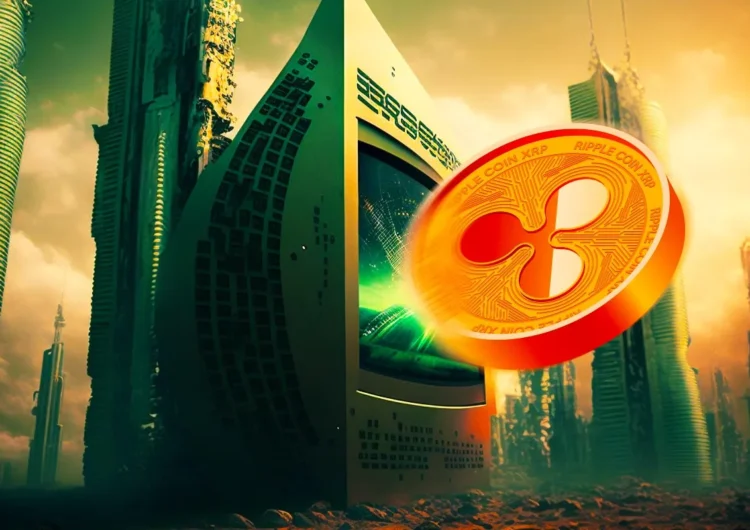Cryptocurrency has revolutionized the world of finance, offering an alternative to traditional banking and centralized monetary systems. But as this digital asset class evolves, it is now taking a step further into a concept known as the Futureverse—a blend of futuristic technologies and decentralized systems designed to propel cryptocurrency into a new era of integration, utility, and innovation.
What is the Futureverse?
The Futureverse isn’t just a technological upgrade; it’s a vision of how various emerging technologies, such as blockchain, artificial intelligence (AI), the Internet of Things (IoT), and virtual/augmented reality, converge to create an interconnected ecosystem. The Futureverse redefines the role of cryptocurrencies, taking them from being just digital money to becoming a foundational element for these futuristic technologies to thrive.
The Futureverse envisions a world where decentralized systems empower individuals, streamline industries, and remove intermediaries. At its core, it is about democratizing technology and enhancing the value that cryptocurrencies can bring beyond financial markets.
Key Drivers of the Futureverse
- Interoperable Blockchains In the current cryptocurrency landscape, one major barrier is the lack of interoperability between different blockchain networks. The Futureverse is working to bridge this gap. It envisions a space where various blockchains communicate seamlessly, allowing assets, data, and services to move fluidly across networks. Interoperable blockchains will enable greater liquidity, accessibility, and efficiency in crypto transactions.
- Smart Contracts and Decentralized Applications (dApps) Smart contracts, which automate and enforce agreements on the blockchain, will play an essential role in the Futureverse. These contracts remove the need for intermediaries, reducing costs and increasing the transparency of transactions. The rise of decentralized applications (dApps), which run on blockchain networks, will further expand cryptocurrency’s utility into different sectors like gaming, healthcare, real estate, and supply chain management.
- AI and Crypto Synergy The integration of AI with cryptocurrency platforms is a significant driver of the Futureverse. AI can analyze blockchain data to detect patterns, forecast market trends, and enhance security measures, particularly in the realm of fraud detection and asset management. Machine learning algorithms can also optimize blockchain protocols, making cryptocurrencies more efficient and adaptable.
- Metaverse and Crypto Integration The Metaverse, a digital universe that blends virtual and augmented reality, is poised to become one of the Futureverse’s core components. Cryptocurrencies, particularly non-fungible tokens (NFTs), will act as the currency of the Metaverse, enabling the purchase of virtual real estate, digital goods, and services. The convergence of crypto with the Metaverse opens a new frontier for digital commerce, social interaction, and entertainment.
- Internet of Things (IoT) IoT devices collect data and communicate over the internet, and when combined with blockchain technology, they create decentralized networks for secure and transparent data exchange. Cryptocurrencies will fuel this interconnected web of devices, enabling micropayments between machines in real-time. For example, electric vehicles could automatically pay for charging using cryptocurrencies, or smart homes could manage utilities autonomously through crypto-based microtransactions.
The Role of Decentralized Finance (DeFi) in the Futureverse

Decentralized Finance, or DeFi, is reshaping how individuals access financial services by offering alternatives to traditional banking products such as loans, savings, insurance, and trading, all without the need for intermediaries like banks or brokers. In the Futureverse, DeFi will continue to evolve, becoming more accessible, user-friendly, and secure.
One of the goals of DeFi in the Futureverse is to integrate with other decentralized technologies, creating an ecosystem where users can interact with multiple services seamlessly. Imagine a world where you can borrow money, stake assets, trade cryptocurrencies, and access decentralized social platforms all from the same ecosystem—without ever leaving the blockchain.
Challenges Ahead for the Futureverse
While the Futureverse presents an exciting future for cryptocurrency and decentralized technologies, it also faces some challenges:
- Regulation and Compliance As cryptocurrencies become more integrated into the global economy, governments and regulatory bodies will likely impose stricter regulations. Ensuring that the decentralized nature of cryptocurrencies can coexist with evolving legal frameworks will be a delicate balancing act. The Futureverse will need to navigate compliance while maintaining its core principles of transparency and decentralization.
- Security Concerns As the Futureverse expands, so too will the threat landscape. Cryptocurrencies and decentralized systems must continuously evolve to stay ahead of cyber-attacks and hacks. Integrating AI and advanced cryptographic solutions will be critical in mitigating these risks and maintaining the integrity of the Futureverse.
- Scalability As blockchain technology becomes more widely adopted, scalability becomes a pressing issue. Networks need to process thousands of transactions per second without compromising security or decentralization. Various scaling solutions, such as layer-2 technologies and shard-based blockchains, are under development to tackle this challenge.


